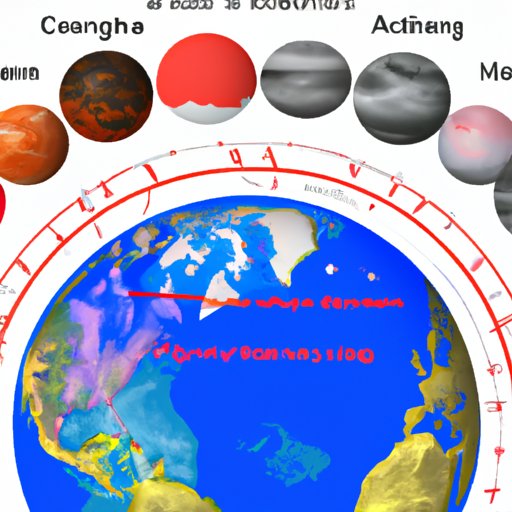Introduction
An ice age is a period of time during which large areas of the Earth are covered with glaciers and snow. These periods of extreme cold often last for thousands of years, and can have significant impacts on the environment and the species that live there. Though the exact causes of ice ages are still being debated, there are several theories that have been proposed to explain why they occur.
In this article, we will explore what most likely caused the ice ages. We will examine the historical evidence of Earth’s climate and investigate some of the major factors that may have contributed to cooling temperatures over time. Finally, we will analyze the potential effects of continental rearrangements on glacial cycles.
Examining the Historical Evidence of Earth’s Climate
To better understand what may have caused the ice ages, it is important to look at how Earth’s climate has changed over time. During prehistoric times, the Earth was much warmer than it is today. In fact, most of the planet was covered with lush vegetation and tropical forests. As time went on, however, the climate began to cool and large areas of the planet were eventually covered with snow and ice.
The reasons for this shift in temperature are not entirely clear, but scientists believe that a combination of factors may have contributed to the cooling of global temperatures. In the next section, we will examine some of these factors in more detail.
Investigating Major Factors That May Have Contributed to Cooling Temperatures
One factor that may have played a role in cooling global temperatures is volcanism. When a volcano erupts, it releases large amounts of ash, sulfur, and other materials into the atmosphere. This material can block out the sun’s rays, causing the planet to cool. This phenomenon is known as “volcanic winter,” and it can have a significant impact on global temperatures.
Changes in Earth’s orbit may also have contributed to cooling temperatures. Over long periods of time, the shape of Earth’s orbit around the sun can change slightly. This shift can cause the planet to be farther away from the sun at certain times, leading to cooler temperatures.

Evaluating the Influence of Carbon Dioxide Levels Over Time
Another factor that may have played a role in the cooling of global temperatures is the level of carbon dioxide in the atmosphere. Carbon dioxide is a greenhouse gas, meaning that it traps heat in the atmosphere and keeps the planet warm. If the level of carbon dioxide in the atmosphere decreases, the planet will become colder.
Over time, the level of carbon dioxide in the atmosphere has fluctuated significantly. During the time of the ice ages, the levels were much lower than they are today. This suggests that a decrease in carbon dioxide levels may have been a contributing factor to the cooling of global temperatures.

Analyzing the Potential Effects of Continental Rearrangements on Glacial Cycles
The movement of continents can also have an effect on global temperatures. When continents move, they can cause changes in ocean currents and wind patterns. This can lead to changes in weather patterns and affect the distribution of heat around the globe. For example, if a continent moves closer to the poles, it can cause a cooling effect due to the increased amount of snow and ice.
Continental movements can also cause changes in sea levels. When sea levels drop, large areas of land are exposed. This can lead to an increase in the amount of snow and ice that accumulates in these areas, which can further contribute to cooling global temperatures.
Conclusion
In conclusion, it is likely that a combination of factors have contributed to the cooling of global temperatures and the onset of ice ages. Volcanism, changes in Earth’s orbit, and decreases in carbon dioxide levels are all possible contributors. Additionally, continental rearrangements may have played a role by causing changes in ocean currents, wind patterns, and sea levels.
Though more research is needed to fully understand the causes of ice ages, these factors provide us with a better understanding of the mechanisms behind the cooling of global temperatures and the onset of glaciation. With further study, we may one day be able to accurately predict when the next ice age will occur.


